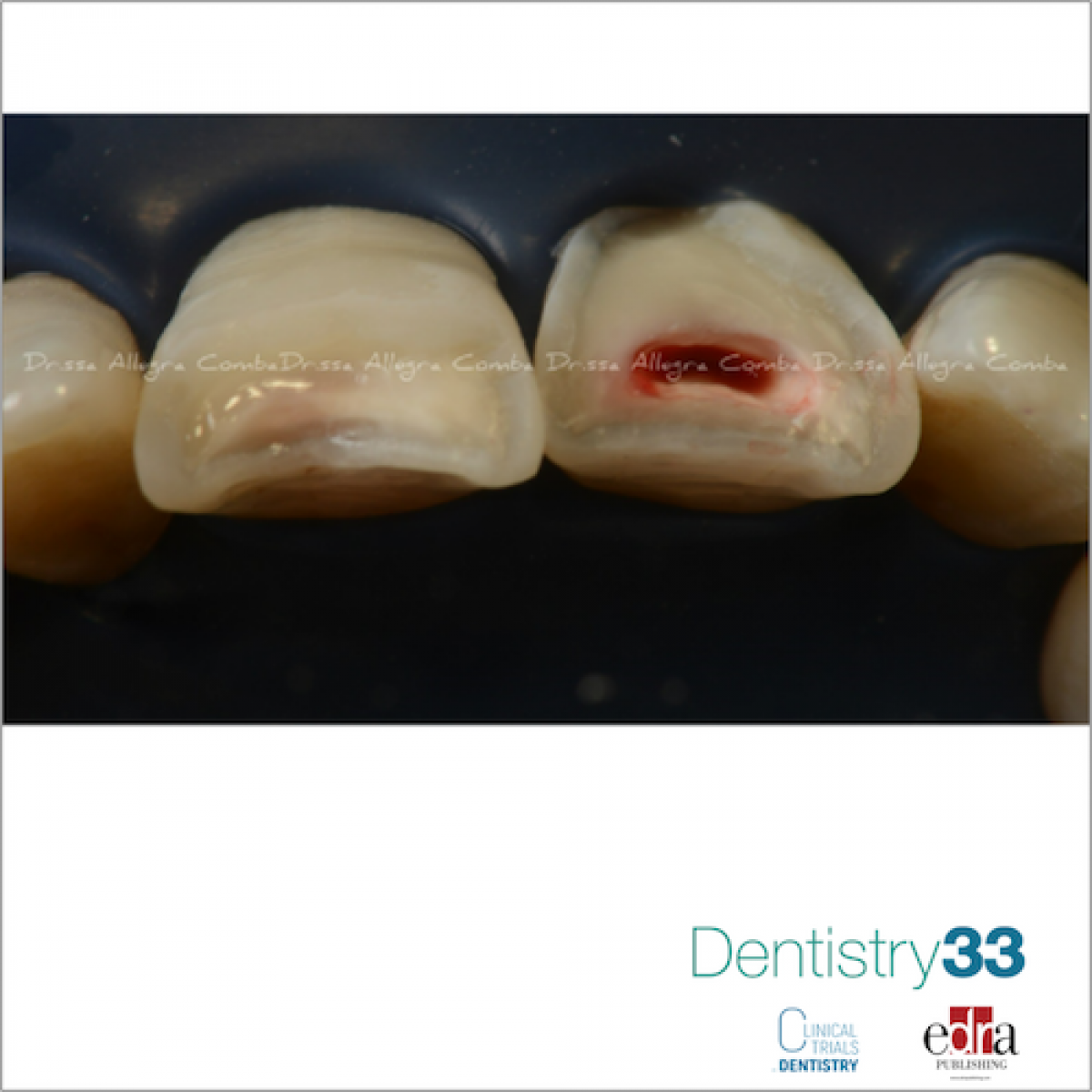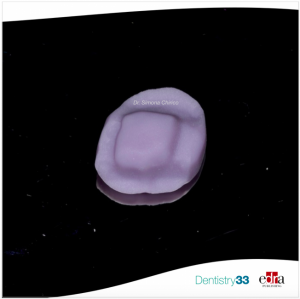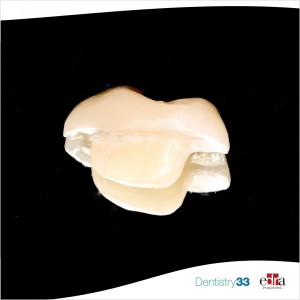
Are different direct techniques affecting interfacial gap and fracture resistance of endodontically treated anterior teeth?
Allegra Comba
Restoration of endodontically treated teeth (ETT) remains a challenge for dental clinicians, as the endodontic treatment weakens the tooth structure in terms of biomechanical behavior compared with the vital counterpart. For that reason, the research group of the University of Turin, Italy, guided by Professor Nicola Scotti together with the University of Geneva, conducted an in vitro study investigating the effect of different direct restoration techniques on endodontically treated anterior teeth with different cavity designs, and analyzed the outcomes in terms of interfacial gap and fracture resistance.
Materials and methods
To perform the experiment, Dr. Allegra Comba and the rest of the authors selected ninety upper central incisors, performed the endodontical treatment, and divided them into three groups (n = 30) according to the cavity design: minimal endodontic cavity access (group A), endodontic access + mesial class III cavity (group B), and endodontic access + two class III cavities (group C). Three subgroups (n = 10) were then created accordingly to the restoration technique: nano hybrid composite restoration (subgroup a), glass fiber post + dual-cure luting cement (subgroup b), and bundled glass fiber + dual-cure luting cement (subgroup c). Samples underwent micro-CT scan, chewing simulation, and a second micro-CT scan. 3D quantification (mm3) of interfacial gap progression was performed by the authors; then, samples were subjected to fracture resistance test.
Results
Statistical analyses of the data obtained by the research group of the Dental School of Turin suggested that groups A and B had significantly lower interfacial gap progression compared with group C. In addition, subgroup b performed significantly better compared with subgroups a and c. Improved fracture strength was reported for group C compared with group A, while both subgroups b and c performed better than subgroup a.
Conclusions
Based on the outcomes obtained by the Italian research group, it can be concluded that cavity design significantly influences interfacial gap progression, fracture resistance, and fracture pattern. In addition, fiber post-supported composite significantly reduced gap progression and improved fracture resistance of ETT anterior teeth. Finally, vertical bundled fibers were not able to reduce interfacial gap progression significantly, but they increased fracture resistance and slightly improved fracture pattern, even if not as much as conventional fiber post.
A minimally invasive approach, conserving marginal crests, should be applied whenever possible. Inserting a fiber post is indicated when restoring anterior ETT, in order to reduce gap progression, improve fracture resistance, and avoid catastrophic failures.
For additional information: Could different direct restoration techniques affect interfacial gap and fracture resistance of endodontically treated anterior teeth?
 Related articles
Related articles
Prosthodontics 09 September 2022
Evaluation of Endocrown preparation and fracture resistance in endodontically treated teeth
Lateral-posterior teeth, after endodontic therapy, require adequate restorations to re-establish masticatory function and minimize the risk of fracture, as well as ensure a perfect seal to prevent...
Prosthodontics 11 May 2022
How much does the thickness of lithium disilicate affect the fracture resistance of the endocrown?
The restoration of severely damaged endodontically treated teeth is still a discussed topic in dentistry. Today, the most common restoration for endodontically treated teeth involves post and crown,...
 Read more
Read more
Editorials 10 October 2025
With proud smiles and crisp white coats, ninety-three learners from the DDS Class of 2029 and the International Dentist Pathway Class of 2028 marked the start of their dental careers at the UCSF...
Periodontology 10 October 2025
Continuous professional development (CPD) in Periodontology refers to the overall framework of opportunities that facilitate a life-long learning practice, driven by the learner-practitioner and...
TheraBreath, the #1 alcohol-free mouthwash brand in the U.S.*, has introduced a new line of dentist-formulated, clinically tested toothpastes designed to support professional oral care...
News 10 October 2025
New officers and trustees were installed at the Minnesota Dental Association’s Leadership Conference on September 19 in Minneapolis.
News 10 October 2025
Smartee Denti-Technology today announced that Professor Gang Shen, its Chief Scientist and Executive President of TaiKang ByBo Dental, has once again been named to the World’s Top 2% Scientists...












